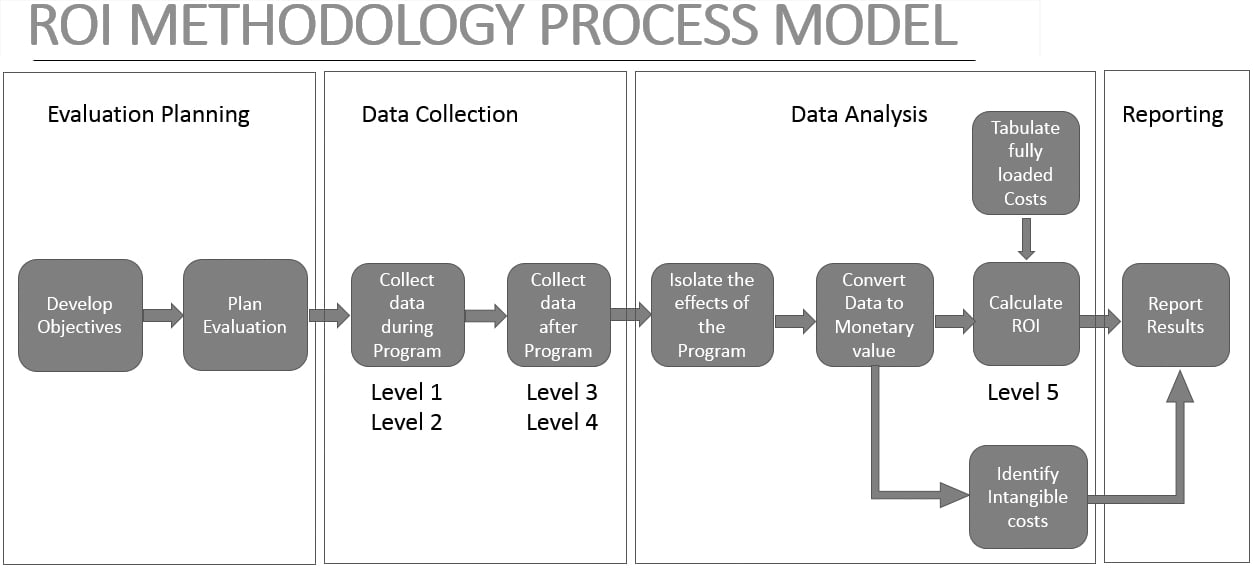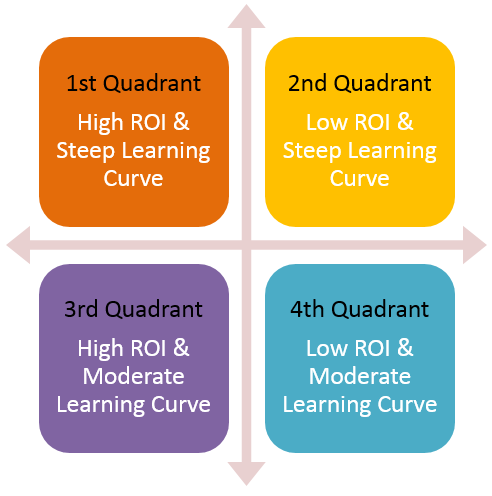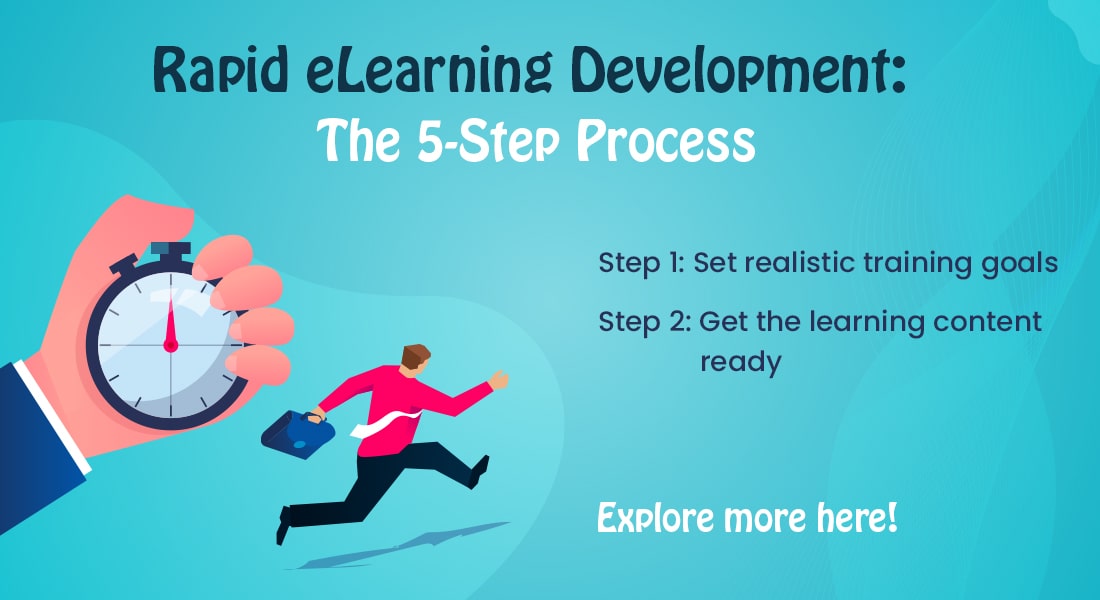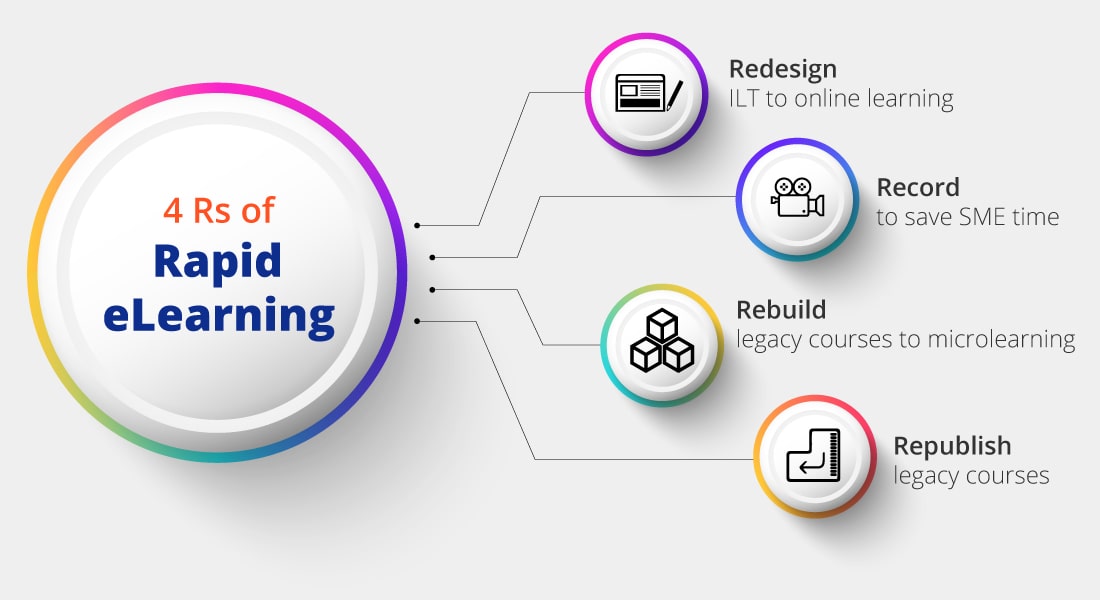How Does Rapid E-learning Development Improve Corporate Training ROI?

Did the investment in the new rapid eLearning development initiative pay off? Imagine if you had to take that question from a stakeholder involved in the rapid eLearning program you just rolled out. Return on Investment (ROI) is a business measure to determine the success of an initiative in economic terms, and learning initiatives are no exception, be it classroom or online training.
Why Does Rapid eLearning Have a Positive Impact on Training ROI?
- Cuts out unnecessary fluff, without compromising on ID principles
- Shortens time taken for eLearning development
- Makes it easy to update content
- Enables quick responsive course design
- Cuts short time to proficiency
The formula for calculating ROI is:
ROI (percentage) = ((Monetary benefits – Training costs) / Training costs) x 100
Measuring ROI in corporate training is not as simple as it sounds. Take a look at the ROI methodology process model below. It involves extensive planning, data collection, and analysis.

Adapted from the Philips ROI Methodology
How has Rapid eLearning Development Impacted ROI?
Rapid eLearning development has had a positive impact on ROI in corporate training because of the following reasons:
1. Cuts Out Unnecessary Fluff without Compromising on ID Principles
Las Vegas-style eLearning courses no doubt look attractive, but are they equally effective in achieving learning objectives? Not necessarily! Jazzy visuals, elaborate backgrounds, and unnecessary gamified elements that do nothing to enhance learning can in fact hinder the learning process.
In contrast to this is rapid eLearning that lacks the glitz associated with fancy eLearning courses. It cuts out unnecessary elements that do not contribute to effective learning and is backed by strong instructional design and adult learning principles. A course that could take months to develop is completed in weeks. Because rapid eLearning development focuses only on the essentials it saves and time effort, thus driving an improvement in ROI.
2. Shortens eLearning Development Time
Rapid eLearning requires less development time as compared to traditional eLearning. Research has proved that rapid eLearning cuts down course development time by almost 40% or sometimes more. This is possible through the use of rapid authoring tools that make eLearning development quick and easy.
Rapid authoring tools feature templates that can be used to make eLearning development truly rapid. Templates can be used for slide layouts, assessments, slide backgrounds, scenarios, and so on. To add a personal touch, you can always customize these eLearning templates. For example, if you need your company logo to be added or a color scheme according to branding guidelines to be followed in the eLearning course, make changes in a template’s master slide and see the changes automatically reflected in the subsequent slides. By cutting down on development time, you are automatically going to gain more from less, leading to an increase in ROI.
3. Makes it Easy to Update Content
Apart from the cost involved in developing online training, organizations have to also factor the cost involved in updating eLearning courses. For example, you might want to update a compliance training program to reflect changes in a policy. Rapid eLearning tools have a zero to moderate learning curve and it’s easy for SMEs or other team members to make changes in the course content, without having to depend on external resources.
Now what if there are some major updates to the course? How does rapid eLearning development make a positive impact on ROI in this case? Here’s a real-life example to elaborate this.
One of our clients wanted 3 different versions of their mandatory Code of Conduct Training, as they planned to rollout one version each year, for a span of 3 consecutive years. While the course content remained the same, the scenarios used in each version had to be changed.
This was because learners who had completed the code of conduct training had to take reinforcement training the next year, and the client didn’t want the same scenarios repeated. By using a rapid authoring tool such as Articulate Storyline, we were able to provide the client with 3 different versions in a short time, and well within their training budget.
Most modern authoring tools offer a range of characters in various poses, and backgrounds that can be used to create scenarios. In this project, we made use of triggers in Storyline to create scenario-based questions that would help learners take decisions when faced with similar situations at the workplace. Now that’s like killing two birds with one stone, the task of training as well as reinforcement of training was taken care of with this training solution.
4. Enables Quick Responsive Course Design
Modern learners want to be able to learn on the go. So, it has become imperative for courses to follow a mobile-first design. With rapid eLearning, the design and development of responsive courses is quick. Why? Here are the reasons:
- In rapid eLearning development, the focus is on the essentials without additional frills, and this is ideal to design mobile-ready courses.
- Latest authoring tools used in rapid eLearning development such as Articulate 360, Lectora Inspire, and Adobe Captivate offer built-in support for responsive learning. Responsive eLearning is where the course content adjusts itself according to the layout of the device that’s used to access the course. The authoring tools mentioned above also offer preview options that let you view how the content is going to look like on desktops, tablets, and mobile phones.
5. Accelerates Time to Competency
Getting learners up the learning curve quickly is related to an increase in ROI. Rapid eLearning development is aimed at rolling out eLearning that’s quick and effective. It can be used to provide enough opportunities for learners to practice, thereby shortening the time taken for learners to become competent.
If you had to classify workplace related tasks based on the learning curve and ROI, you could come up with four categories. Let’s see where rapid eLearning fits.

The 1st quadrant where the learning curve is steep but you expect a high ROI is where the maximum of your training efforts should concentrate on. When there’s a steep learning curve, learners could do with more practice, or more examples to explain understanding of a concept or principle. Rapid eLearning can fit the bill by delivering content that’s to the point, and also offer opportunities for deep learning.
In the 2nd quadrant, you have a steep learning curve and low ROI. It would be better to outsource this task rather than spend time and money training employees.
In the 3rd quadrant where there’s a high ROI and low to moderate learning curve, rapid eLearning as well as other learning formats such as eBooks, podcasts, infographics, or videos can be used. Training is usually not necessary for tasks that fall in the 4th quadrant.
When you use rapid eLearning that includes enough opportunities to practice or to improve decision-making skills, for e.g., software training or compliance training, you are bound to notice a positive impact on the ROI.
Most often, the reason for the failure of corporate training is because there’s a significant disconnect between what the business wants and what an employee wants learning to be. For instance, the business might want a training program that helps in achieving business goals, but the learners might want a training program that’s engaging, fun, personalized and accessible anytime. Rapid eLearning development can be used to meet both these needs successfully, and boost the ROI on your corporate training initiatives. To help you evaluate and measure the impact of eLearning on ROI, get your copy of our eBook ROI and E-learning: Myths and Realities.





![How to Ensure Quality in Rapid eLearning Development [Infographic]](https://blog.commlabindia.com/hubfs/blogs/ensure-rapid-elearning-development-quality-info.jpg)